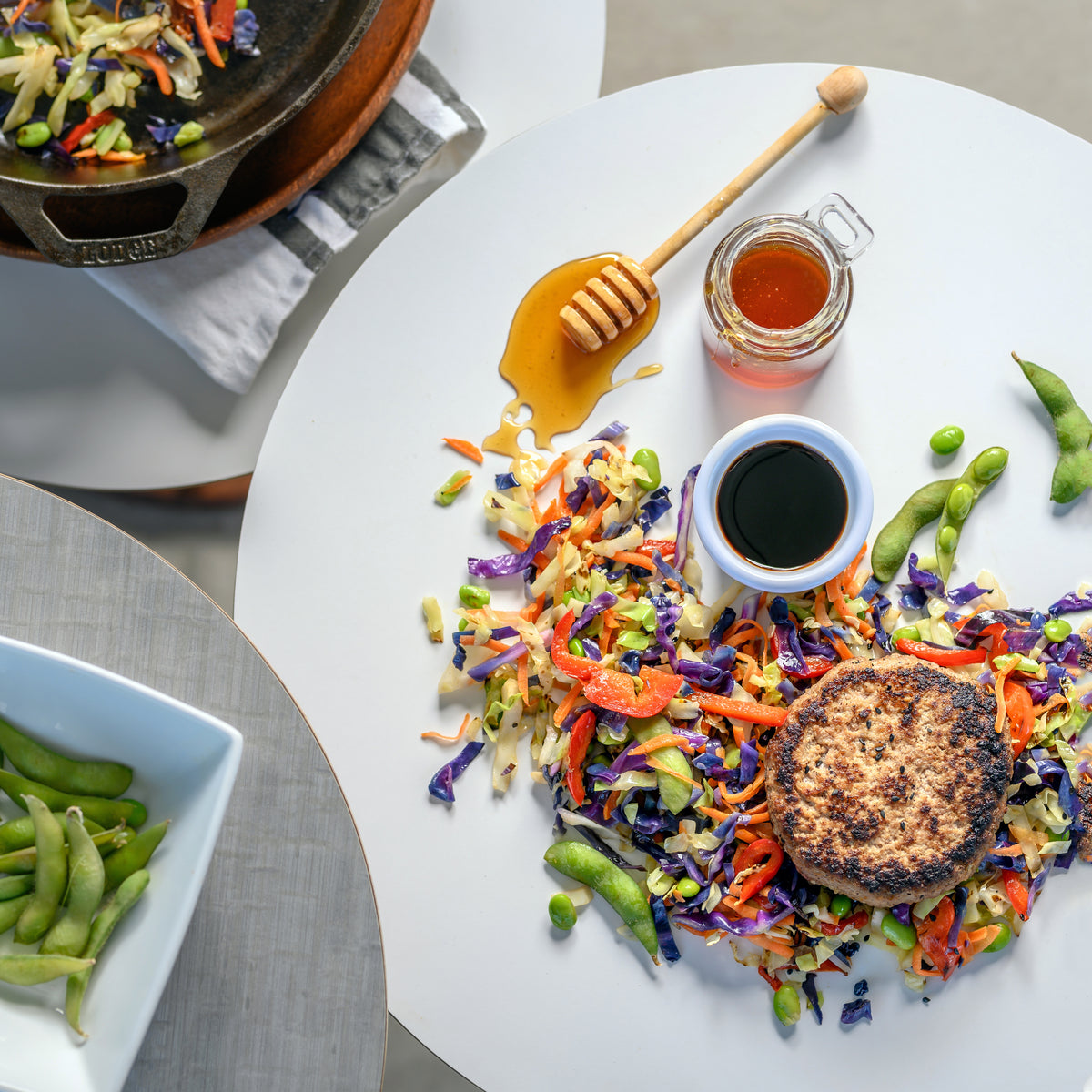Years ago when I would go grocery shopping I fell victim to the words and promising statements on food labels. I would read them with a smile on my face, believing I was making a choice that would help me lose weight and reach my health goals.
Misled by buzzwords and claims, I didn’t truly know what they meant. I used to fall for sugar free claims--that was the buzzword that got me each time. Sugar free Red Bull, sugar free soda, sugar free cookies, sugar free gum. All of these items were laced with artificial sugars. These artificial sugars used to make me bloated and give my stomach cramps. Because it was low in sugar, I figured it was healthy and would make me lose weight faster. What I didn’t realize is that I was consuming all these processed and fake ingredients that were not aiding in my weight loss and were NOT nourishing my body.
Fast forward 10 years, I’m not the victim anymore. I have learned what food is made of and how to understand a product in its fullest. I hope this blog will save you years of aggravation and confusion because I have already been down that path.
After reading this blog you’ll understand what nutrition claims are, what to do when you see one, and how to make a healthy choice.
What are nutrition claims?
Nutrition claims are exactly what they sound like--claims about nutrients in a food.
From the FDA: “Nutrient content claims describe the level of a nutrient in the product, using terms such as free, high, and low, or they compare the level of a nutrient in a food to that of another food, using terms such as more, reduced, and lite.”
Nutrition claims can be helpful if you need to follow a specific eating plan, or they could be misleading if you aren’t sure what they mean and don’t understand the other nutrients and sources in a packaged food.
Here are a few common claims and what they mean:
- Lite/Light - Term can be used to describe the color of the product and doesn’t mean it contains less fat.
- No Added Sugar - Often on food drink and most likely contains high amounts of natural sugars.
- Reduced Salt - The product might typically contain very high amounts of sodium. A reduction of 25% in salt could be very high.
- Low Fat - Term doesn’t always mean healthy. If food manufacturers remove fat from the product, chances are that sugar has been added to make up for the flavor/taste.
- Low Calorie - Less than 40 calories per serving.
- Low Cholesterol - Less than 20mg of cholesterol and 2 grams or less of saturated fat.
- Reduced Fat - 25% less saturated fat per serving.
- Good Source Of - Provides at least 10% of the daily recommended value of a particular vitamin or nutrient per serving.
- Calorie Free - Less than 5 calories per serving.
- Fat Free / Sugar Free - Less than 1.2 grams of fat or sugar per serving.
- Low Sodium - Less than 140mg of sodium per serving.
- High In - Provides 20% or more of the daily recommended value of a specified nutrient per serving.
- High Fiber - 5 or more grams of fiber per serving
- Gluten Free - A food not containing gluten.
These statements have the power to connect with us as individuals. They hit home if we are currently “on a diet” or trying to follow a recent trend that we think will get us closer to our nutrition goals. Bottom line, regardless of what the package says, if you don’t know what a claim truly means you could be misled by words.
How to understand what’s really in our food
Let’s explore a few examples in greater detail, and what to do when you see a potentially confusing nutritional claim.
Sugar Free
Products claiming to be “sugar free” must have less than 1.2 grams of sugar per serving and are often sweetened with artificial sweeteners. Giving you the taste of sweet without all the calories, these chemicals are not happy visitors in our bodies, especially when consumed in large amounts. Studies have shown that they can affect our insulin levels and our gut if we regularly consume them, they can decrease our preference for natural sugar containing foods such as fruits and vegetables, and can cause us to crave sweets. I personally experienced these effects as well.
Sugar free doesn’t mean “eat this food and you will lose weight because sugar makes you gain weight,” but that is exactly what I read when I saw “sugar free” 10 years ago. Sound familiar?
So, rather than immediately grab the “sugar free” option, read the ingredient list and nutrition facts label. Look for the other nutrients in the food. Is it balanced or are you going to pair it with something to make it balanced? Look at the ingredients…will those foods help you feel your best? If you answer yes to both questions...go for it. Otherwise, you may want to explore other options so you can make a healthy choice.
Gluten Free
If you experience from gluten intolerance or have celiac disease, gluten free is not a fad for you, this is a dietary restriction that you live with and will look for something like this to aid in your nutrition and health.
For the rest of us, gluten is not bad. It is a protein found in wheat, barley and rye. There is still lots of confusion around gluten, thinking it’s a carb because it’s found in foods like bread, wraps, pasta etc. The marketing speaks to individuals who don’t understand what gluten is or who may be misinformed about carbohydrates, who may think they need to eliminate gluten or buy a product without it, not even fully understanding it. A gluten free product could have an imbalance of macronutrients and be full of refined sugar, but since it’s “gluten free” we think it’s a healthy choice.
Take for instance whole wheat pasta. It is a great complex carb offering slow digesting carbohydrates, a great fuel source to pair with a lean protein, heart healthy fat, and a veggie. It contains wheat, so it contains gluten.
What we want to be aware of is cookies, poptarts, and cereals that don’t offer quality ingredients and balanced macronutrients, and thinking they’re a healthy choice simply because they’re gluten free.
As with the sugar free example, the only way to know if something is a healthy choice is to read the nutrition facts label and ingredient list. What does the balance of macronutrients look like, or is this something you can pair to create nutritional balance? What foods are most prevalent on the ingredient list; are they quality foods that your body will know how to use efficiently for energy? If so, that sounds like a healthy choice. If not, you might want to see if there’s another option.
Low Fat
If something is low fat, there is almost always sugar or carbohydrates added to the product to enhance flavor. Take for instance low fat peanut butter. Whoever thought this was a good idea? Fats in peanut butter are good fats. The low fat peanut butters have added sugars, which are not naturally found in peanuts. This is misleading for someone who needs to eat low fat. We would recommend eating real peanut butter but in small amounts vs. choosing the low fat variety, because real peanut butter is a better quality food than low fat peanut butter.
The way to understand if something marked “low fat” is a healthy choice is to read the nutrition facts label and ingredient list.
You now know what nutrition claims are, what to do when you see one, and how to make a healthy choice. Once we can understand food and how to determine if a packaged item is good for us, we can be more confident in our food choices. The first thing you want to do when buying a packaged food is read the ingredient list and the nutrition facts. If you can train yourself to start to look at those things vs. reading what the pretty container says, you will be on your way to rude awakenings and a healthier lifestyle.






